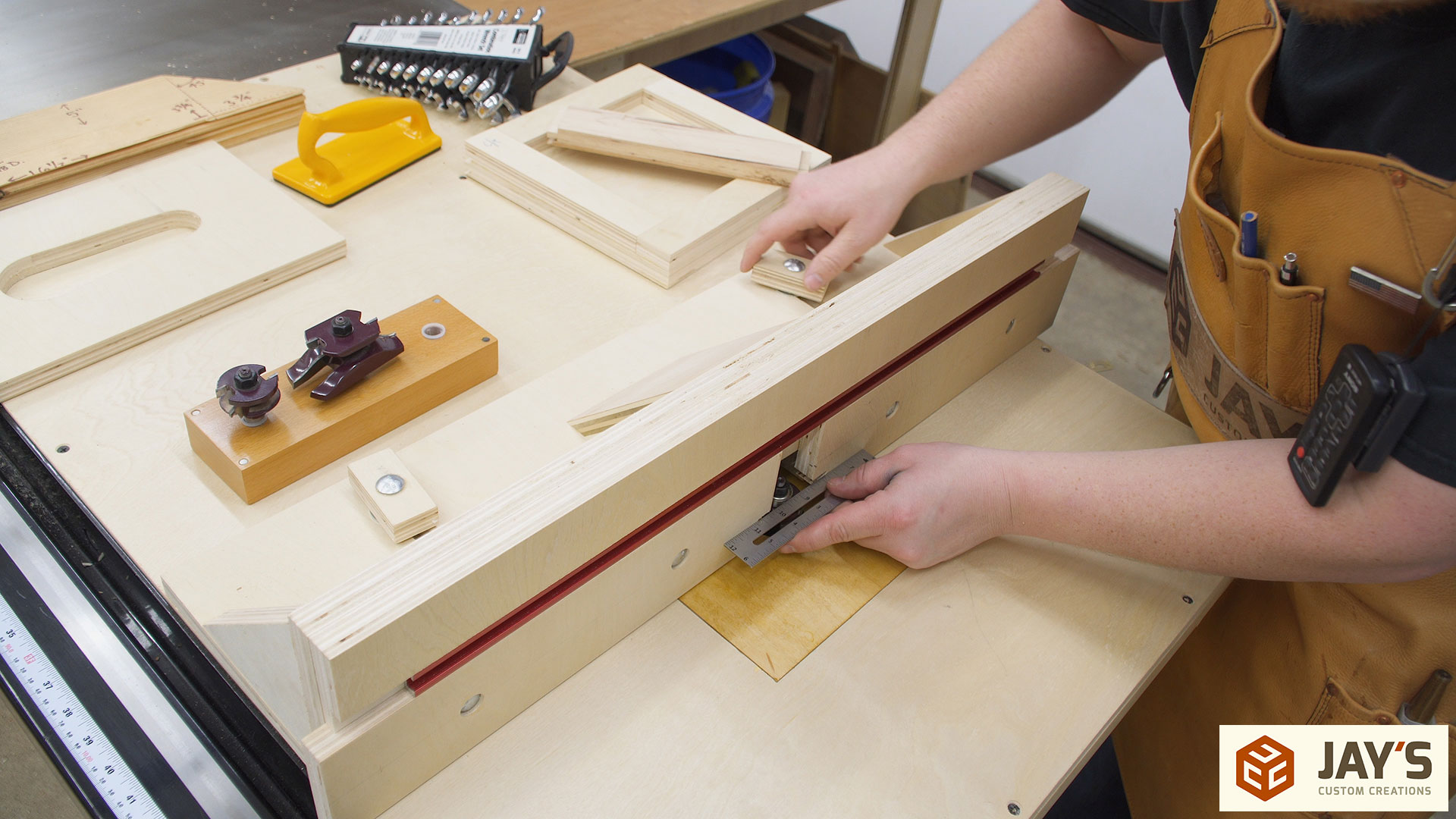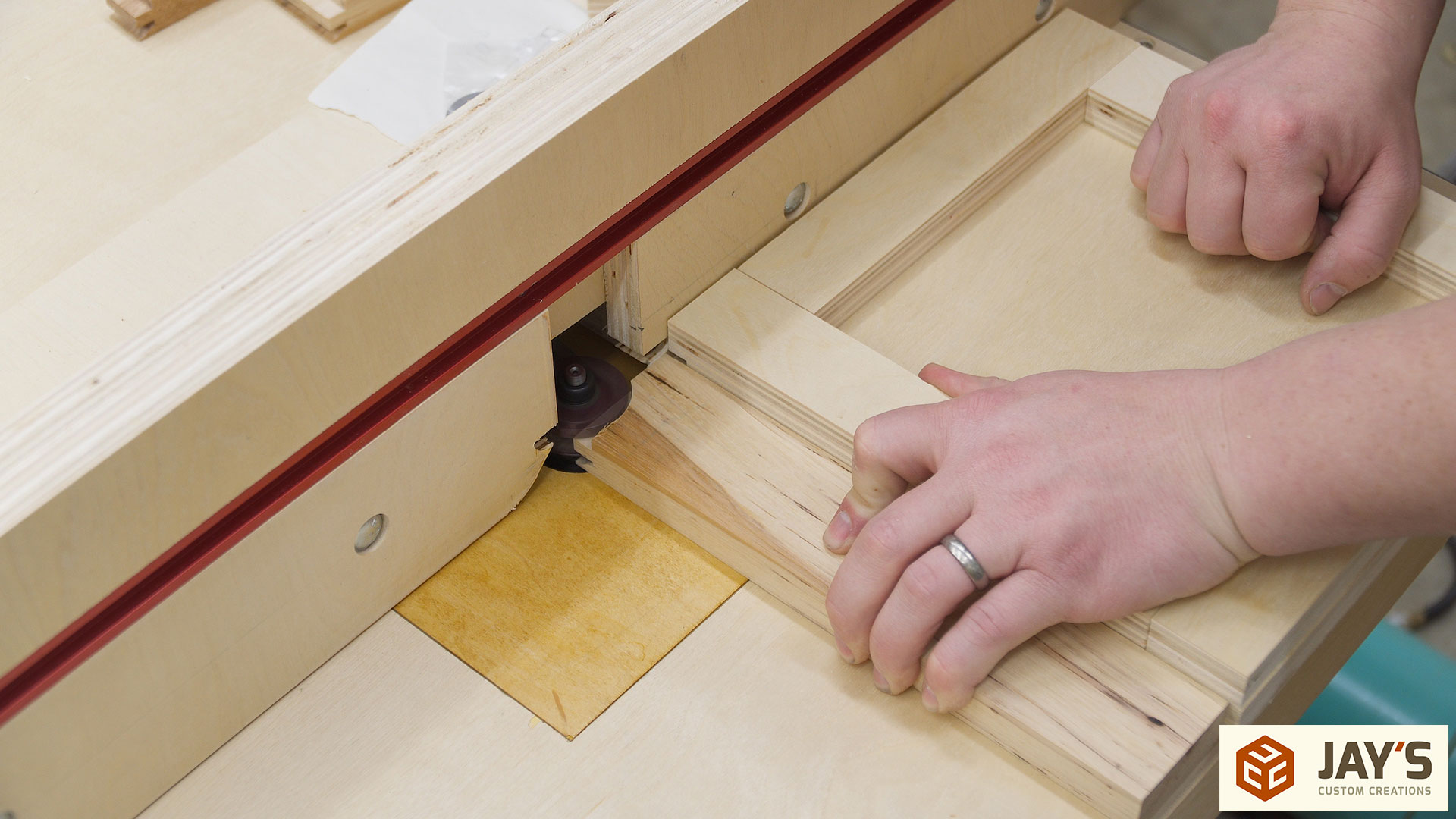Router Cabinet Door Styles and Materials: How To Router Cabinet Doors

Router cabinet doors offer a wide range of stylistic options and material choices, significantly impacting the overall aesthetic and functionality of kitchen or bathroom cabinetry. The selection process involves careful consideration of both visual appeal and practical factors such as durability and cost.
Cabinet Door Styles
Cabinet door styles significantly influence the overall design aesthetic. Three prevalent styles are the Shaker, flat panel, and raised panel doors. Shaker doors feature a simple, recessed panel within a frame, providing a clean and minimalist look suitable for contemporary and transitional designs. Flat panel doors, as their name suggests, have a flat surface without any raised or recessed elements, offering a modern and sleek appearance often favored in minimalist or contemporary kitchens. Raised panel doors, characterized by a raised central panel framed by a surrounding molding, provide a more traditional and ornate look, well-suited for classic or craftsman-style cabinetry. The choice depends heavily on the desired style of the room.
Cabinet Door Construction Methods
The construction of each door style involves specific joinery techniques and hardware considerations. Shaker doors typically employ a frame-and-panel construction, where the raised panel is carefully fitted into the surrounding frame using dadoes, rabbets, or other joinery methods. Precise measurements and tight fits are crucial for a seamless appearance. Flat panel doors often utilize a simpler construction, with the flat panel directly attached to the frame using screws or adhesives, sometimes incorporating concealed fasteners for a clean finish. Raised panel doors require more intricate joinery, with the raised panel meticulously fitted into the frame, often utilizing tongue-and-groove or similar techniques to ensure stability and a clean aesthetic. Appropriate hinges and other hardware are selected to complement the door style and overall design. For example, concealed hinges are often preferred for a clean, modern look.
Cabinet Door Materials
The choice of material significantly impacts the door’s durability, appearance, and cost.
| Material | Pros | Cons | Suitability |
|---|---|---|---|
| Solid Wood (Oak, Maple, Cherry) | Durable, aesthetically pleasing, can be stained or painted | Expensive, susceptible to warping or cracking with changes in humidity | High-end cabinetry, traditional styles |
| Medium-Density Fiberboard (MDF) | Cost-effective, smooth surface, readily accepts paint | Less durable than solid wood, can be damaged by moisture | Budget-friendly cabinetry, painted finishes |
| Plywood | Strong, dimensionally stable, relatively inexpensive | Can have visible layers, may require more finishing work | Mid-range cabinetry, various styles |
| Thermofoil | Moisture resistant, durable, easy to clean | Can be less aesthetically pleasing than wood, limited design options | High-moisture areas (bathrooms), budget-friendly option |
Custom Router Cabinet Door Designs
Custom designs allow for unique features and design elements. For instance, a client might request a Shaker door with a unique inlay of contrasting wood, creating a visually striking focal point. Another example could involve a raised panel door with intricate carvings or routed details, adding a level of artistry and sophistication to the overall design. A flat panel door might incorporate a subtle bevel or chamfer, adding depth and visual interest to the otherwise simple design. These custom elements can be achieved through careful planning and precise routing techniques. A bespoke design, for example, might incorporate a combination of materials, such as a wood frame with a glass panel, creating a unique and visually interesting cabinet door. The possibilities are extensive, limited only by the imagination and skill of the designer and craftsman.
Building and Installing Router Cabinet Doors

Constructing and installing router cabinet doors involves a series of precise steps, from initial material selection and cutting to final finishing and installation. Careful attention to detail at each stage ensures a high-quality, functional, and aesthetically pleasing result. This section details the process of building a simple router cabinet door from scratch and then installing it using various methods.
Building a Simple Router Cabinet Door, How to router cabinet doors
The construction of a router cabinet door begins with careful planning and precise measurements. Accurate dimensions are crucial for a proper fit within the cabinet frame. The following steps Artikel the process:
- Material Selection and Cutting: Choose a suitable material, such as hardwood plywood or medium-density fiberboard (MDF), and cut the door panel to the desired dimensions using a table saw or circular saw. Ensure the cuts are square and clean to avoid fitting issues.
- Routing the Edges: Use a router with a suitable bit to shape the edges of the door panel. Common profiles include a simple rounded edge or a more elaborate decorative profile. A router table offers better control and consistency than hand-held routing.
- Adding a Raised Panel (Optional): If desired, a raised panel can be added for aesthetic appeal. This involves cutting a recess in the door panel and fitting a smaller piece of wood (the raised panel) into the recess. Precise measurements and careful fitting are essential.
- Assembly: If using multiple pieces of wood (e.g., for a raised panel), assemble them using wood glue and clamps. Ensure proper alignment and clamping pressure for a strong, durable bond. Allow the glue to dry completely.
- Finishing: Sand the door panel smooth, paying attention to any seams or edges. Apply a finish, such as paint, stain, or varnish, to protect the wood and enhance its appearance. Multiple coats may be needed for optimal protection and color depth.
Installing Router Cabinet Doors: Hinges, Latches, and Alignment
Proper installation ensures the door functions smoothly and looks professional. The choice of hinges and latches depends on the door style and cabinet design. Precise alignment is critical for a perfect fit and seamless operation.
- Hinge Selection and Installation: Various hinge types are available, including inset, overlay, and full overlay hinges. The type chosen will depend on the door hanging method (discussed below). Hinges should be carefully mortised into the door and cabinet frame for a flush fit. A hinge jig can assist in ensuring accurate placement and depth.
- Latch Selection and Installation: Latches provide secure closure. Options include magnetic catches, simple latches, or more complex locking mechanisms. The latch should be positioned to engage securely with the cabinet frame when the door is closed.
- Alignment Techniques: Accurate alignment is crucial for proper door function. Use shims to adjust the door’s position, ensuring it is level and plumb. Check for gaps between the door and frame to ensure a consistent fit. A level and measuring tape are essential tools.
A diagram illustrating the installation of inset hinges: Imagine a rectangle representing the cabinet door. Two smaller rectangles, representing the hinges, are positioned on the edge of the larger rectangle. These smaller rectangles are partially recessed into the larger rectangle. Another set of smaller rectangles, representing the hinge cups, are similarly recessed into the cabinet frame. The diagram should show how the hinges connect the door to the frame.
Door Hanging Methods: Inset and Overlay
Two primary methods exist for hanging cabinet doors: inset and overlay. Each offers distinct advantages and disadvantages.
- Inset Doors: Inset doors sit within the cabinet frame, creating a recessed look. Advantages include a clean, classic appearance and a protected door surface. Disadvantages include the more complex installation process and potential difficulty in achieving perfect alignment.
- Overlay Doors: Overlay doors overlap the cabinet frame. Advantages include easier installation and the ability to conceal the frame. Disadvantages include a less traditional appearance and potential for visible gaps between the door and frame if not precisely installed.
Troubleshooting and Maintenance of Router Cabinet Doors

Router cabinet doors, while offering a high degree of customization and aesthetic appeal, are susceptible to certain issues during construction, installation, and use. Understanding these potential problems and implementing preventative measures is crucial for ensuring the longevity and functionality of these doors. This section addresses common problems and provides solutions and a comprehensive maintenance plan.
Common Problems and Solutions
Addressing potential problems proactively is essential for preventing costly repairs and ensuring the long-term quality of router cabinet doors. The following list details common issues and their corresponding solutions.
- Misalignment: Inaccurate routing or improper installation can lead to misaligned doors, resulting in uneven gaps and poor functionality. This is often caused by inconsistent measurements or improper fitting of hinges and hardware.
- Warping: Exposure to fluctuating humidity or temperature can cause wood to warp, leading to distorted doors that no longer fit properly. This is especially problematic with solid wood doors.
- Sticking: Paint buildup, swelling due to moisture, or poorly fitted hinges can cause doors to stick. This can be frustrating and lead to damage if forced.
- Loose Joints: Poor glue application or inadequate clamping during construction can result in loose joints, impacting the structural integrity of the door.
- Surface Damage: Scratches, dents, and chips are common occurrences, particularly in high-traffic areas. These affect the aesthetic appeal.
How to router cabinet doors – Preventative measures include using properly seasoned wood, applying appropriate finishes for protection against moisture, and ensuring accurate measurements and installation techniques. Careful handling during construction and installation is also vital.
Maintenance Plan for Router Cabinet Doors
Regular maintenance is crucial for preserving the beauty and functionality of router cabinet doors. This plan Artikels cleaning, repair, and refinishing techniques, along with a suggested maintenance schedule.
A systematic approach to maintenance, including regular cleaning and periodic inspections, will significantly extend the lifespan of your cabinet doors.
- Cleaning: Dust and grime should be removed regularly using a soft cloth and a mild cleaning solution. Avoid abrasive cleaners or excessive moisture.
- Inspection: Periodically inspect the doors for any signs of damage, such as loose hinges, warping, or scratches. Address minor issues promptly to prevent further problems.
- Repair: Minor scratches and dents can often be repaired using wood filler and touch-up paint. For more significant damage, professional repair may be necessary.
- Refinishing: Over time, the finish on the doors may wear down or become damaged. Refinishing can restore the original appearance and protect the wood. This typically involves sanding, cleaning, and applying a new coat of finish.
Maintenance Schedule
| Task | Frequency | Notes |
|---|---|---|
| Cleaning | Weekly | Use a soft cloth and mild cleaner. |
| Inspection | Monthly | Check for loose hinges, warping, or damage. |
| Minor Repairs | As needed | Address small scratches and dents promptly. |
| Refinishing | Every 3-5 years | Depending on wear and tear. |
